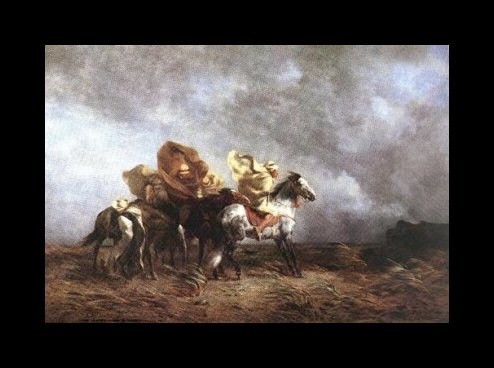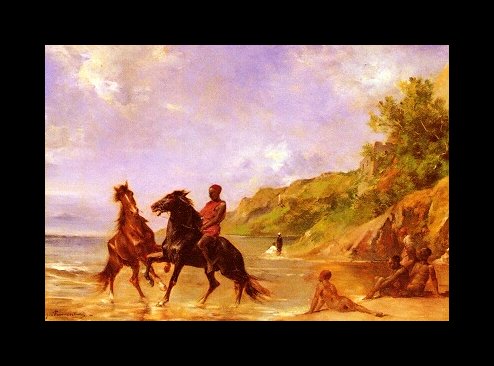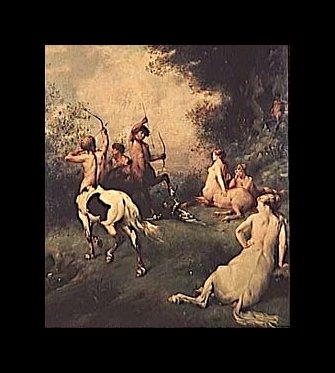Eugene-Samuel-Auguste Fromentin (1820-1876)
Get a Fromentin Certificate of Authenticity for your painting (COA) for your Fromentin drawing.
For all your Fromentin artworks you need a Certificate of Authenticity (COA) in order to sell, to insure or to donate for a tax deduction.
Getting a Fromentin Certificate of Authenticity (COA) is easy. Just send us photos and dimensions and tell us what you know about the origin or history of your Fromentin painting or drawing.
If you want to sell your Fromentin painting or drawing use our selling services. We offer Fromentin selling help, selling advice, private treaty sales and full brokerage.
We have been authenticating Fromentin and issuing certificates of authenticity since 2002. We are recognized Fromentin experts and Fromentin certified appraisers. We issue COAs and appraisals for all Fromentin artworks.
Our Fromentin paintings and drawings authentications are accepted and respected worldwide.
Each COA is backed by in-depth research and analysis authentication reports.
The Fromentin certificates of authenticity we issue are based on solid, reliable and fully referenced art investigations, authentication research, analytical work and forensic studies.
We are available to examine your Fromentin painting or drawing anywhere in the world.
You will generally receive your certificates of authenticity and authentication report within two weeks. Some complicated cases with difficult to research Fromentin paintings or drawings take longer.
Our clients include Fromentin collectors, investors, tax authorities, insurance adjusters, appraisers, valuers, auctioneers, Federal agencies and many law firms.
We perform Eugene-Samuel-Auguste Fromentin art authentication, appraisal, certificates of authenticity (COA), analysis, research, scientific tests , full art authentications. We will help you sell your Eugene-Samuel-Auguste Fromentin or we will sell it for you.

Eugene Fromentin was one of the great Orientalists of France. He was also a prolific writer and art historian. He was born in La Rochelle, and initially went to Paris to study law, where he succeeded in passing his law exams. He always had a desire to be an artist, and he eventually managed to persuade his Father to allow him to train under the classical landscapist Remond. After a time, Fromentin changed his mind, and decided to continue his studies under the more naturalistic painter, Cabat.
In 1846, Fromentin made a secret trip to Algeria with Charles Labbe, who was also to become an Orientalist painter. The following year two Orientalist paintings inspired by this trip were accepted by the Salon. The favourable reception at the Salon encouraged Fromentin to return to Algeria. On his return to Paris he exhibited eleven Orientalist paintings in the Salon, and thus his reputation as an Orientalist painter was firmly established.
The Arab cavalier was a favourite subject matter of Fromentin, and his first Oriental works are divided between Arabs astride camels, and those mounted on horseback. He married in 1852, and after his honeymoon he returned to Algeria .This is said to have been one of his most successful trips as it resulted in two books, and also a store of sketches, and visual images that he was to draw on for the rest of his life.
Fromentin’s most successful Salon was that of 1859, when he gained a First Class medal as well as the Legion of Honneur. He also received praise from progressive critics such as Baudelaire, and a young Degas. In 1861, an Oriental painting of his, exhibited at the Salon was purchased by the French State. In the Salon of 1864 a painting entitled, “Windstorm on the Esparto Plains of the Sahara,” was picked out by a well known art critic of the time as being, “one of the best pictures of the exhibition.”

Fromentin was as well known for his writings, as he was for his art. He published two travel books, one in 1856 entitled, “A Summer in the Sahara,’ and another in 1858, entitled ‘A Year in the Sahel.”


In 1869, Fromentin formed part of a delegation of artists invited on a three month long trip to Egypt to witness the opening of the Suez Canal. Other members of the delegation included the painters Bonnat, Berchere, and Gerome, as well as the writer Theophile Gautier. Fromentin used this trip as an opportunity to paint, and also to write. A painting produced during this trip, entitled, “Dahabiyyah on the Nile at Luxor,” now hangs in the Art Institute of Chicago.’
Art Historians have said that the inauguration of the Suez Canal marked a new era of colonial imperialism, and at the same time marked the twilight of a certain type of pictorial Orientalism.
In the same year as his trip to Egypt, Fromentin also produced a painting which now hangs in the Musee d’Orsay showing a convoy of men travelling through the desert decimated by the desert heat, and entitled, ‘Land of Thirst.’
During the 1870s, Fromentin became particularly interested in the Dutch, and Flemish Masters. He believed that their talent was very much undervalued in France. In the year of his death he published an eloquent study of Dutch and Flemish art entitled, “Les Maitres d’autre fois.”
Collections of paintings by Fromentin can be found in museums in France and America.


Reviews
1,217 global ratings
5 Star
4 Star
3 Star
2 Star
1 Star
Your evaluation is very important to us. Thank you.
